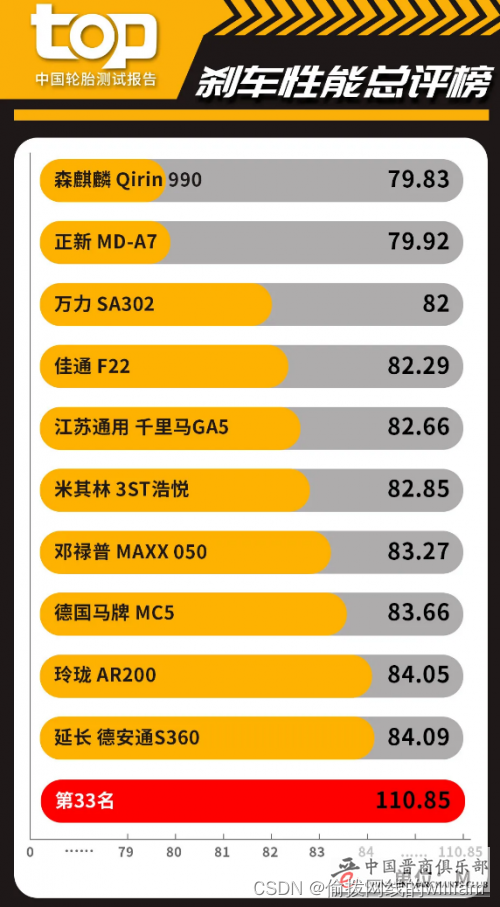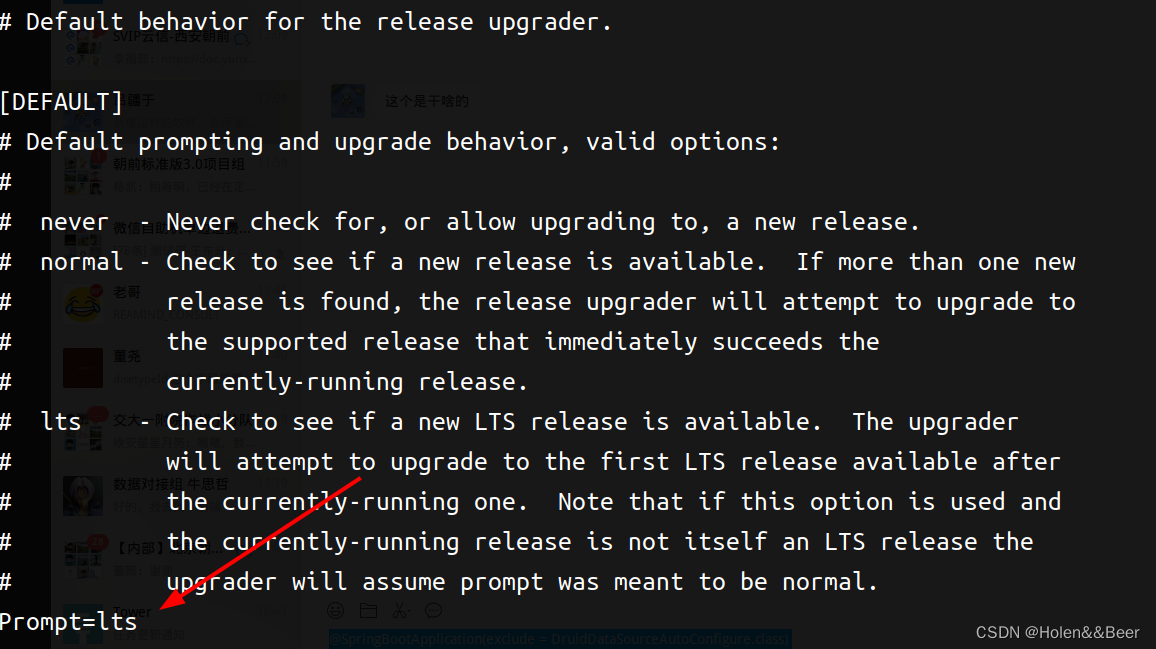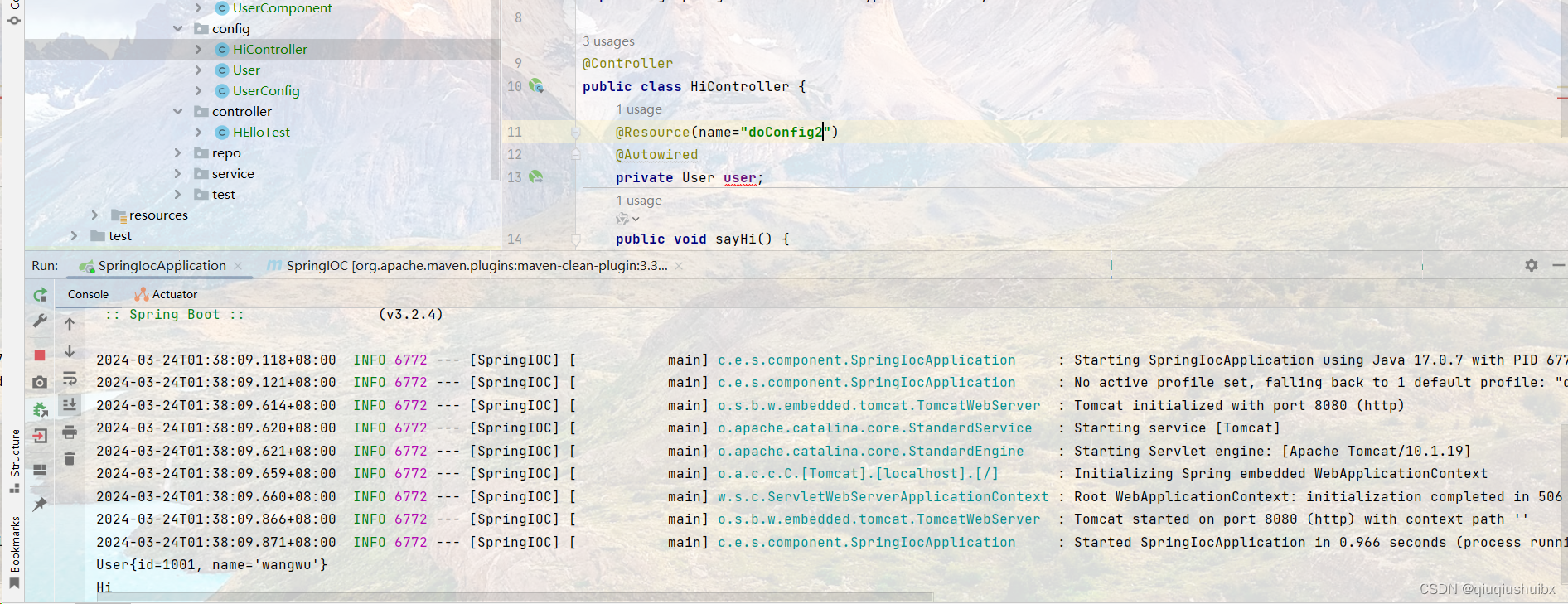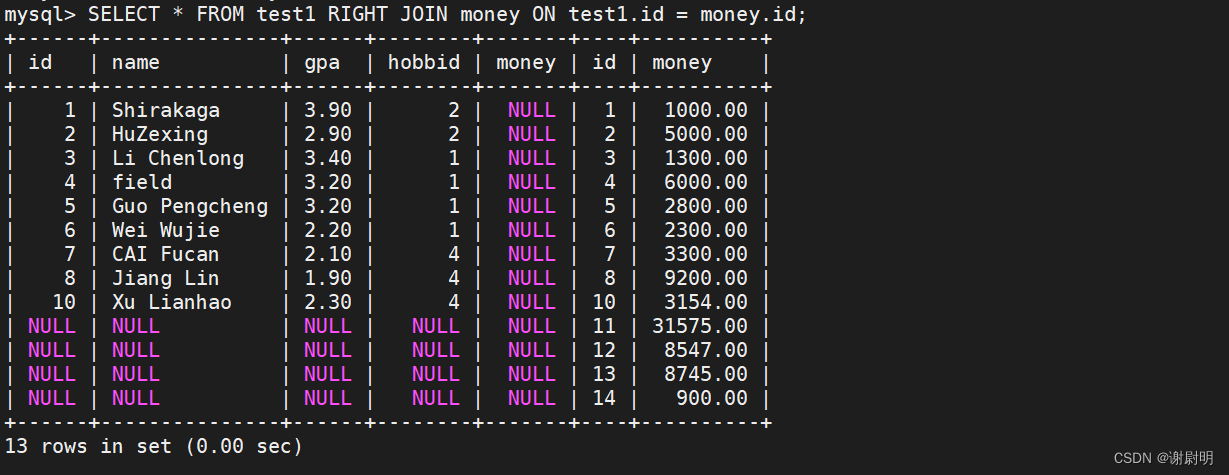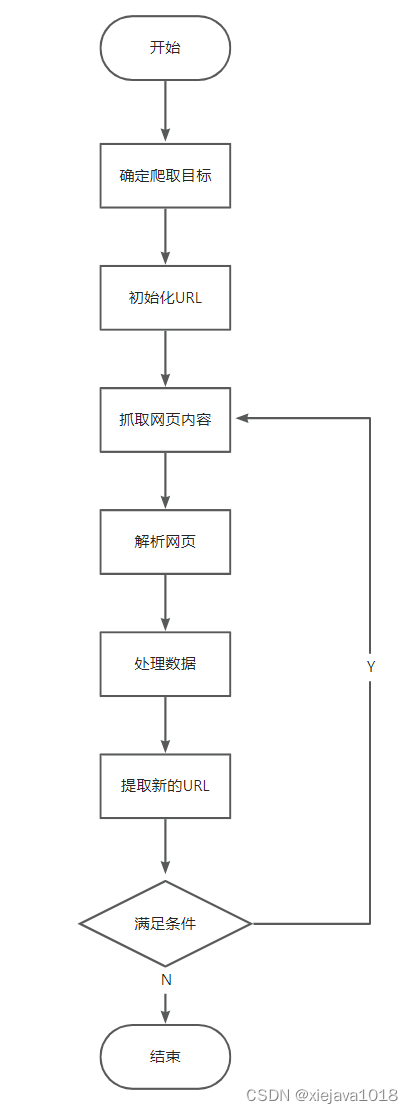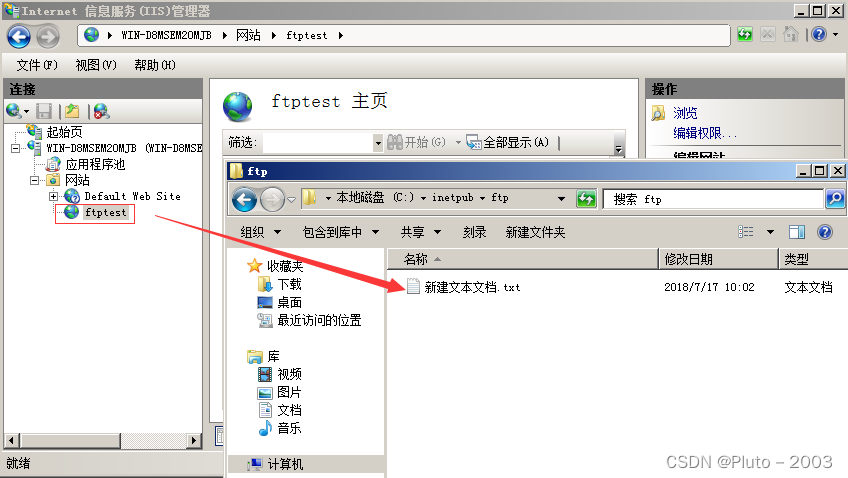文章目录
- ✍线程是什么?
- ✍线程和进程的区别
- ✍线程的创建
- 1.继承 Thread 类
- 2.实现Runnable接口
- 3.匿名内部类
- 4.匿名内部类创建 Runnable ⼦类对象
- 5.lambda 表达式创建 Runnable ⼦类对象
✍线程是什么?
⼀个线程就是⼀个 “执行流”. 每个线程之间都可以按照顺序执行自己的代码. 多个线程之间 “同时” 执⾏着多份代码.
✍线程和进程的区别
- 进程是包含线程的. 每个进程⾄少有⼀个线程存在,即主线程
- 进程和进程之间不共享内存空间. 同⼀个进程的线程之间共享同⼀个内存空间.
- 进程是系统分配资源的最⼩单位,线程是系统调度的最⼩单位。
- ⼀个进程挂了⼀般不会影响到其他进程. 但是⼀个线程挂了, 可能把同进程内的其他线程⼀起带⾛(整个进程崩溃).
进程中的一个执行任务(控制单元),负责当前进程中程序的执行。一个进程至少有一个线程,一个进程可以运行多个线程,多个线程可共享数据。
与进程不同的是同类的多个线程共享进程的堆和方法区资源,但每个线程有自己的程序计数器、虚拟机栈和本地方法栈,所以系统在产生一个线程,或是在各个线程之间作切换工作时,负担要比进程小得多,也正因为如此,线程也被称为轻量级进程
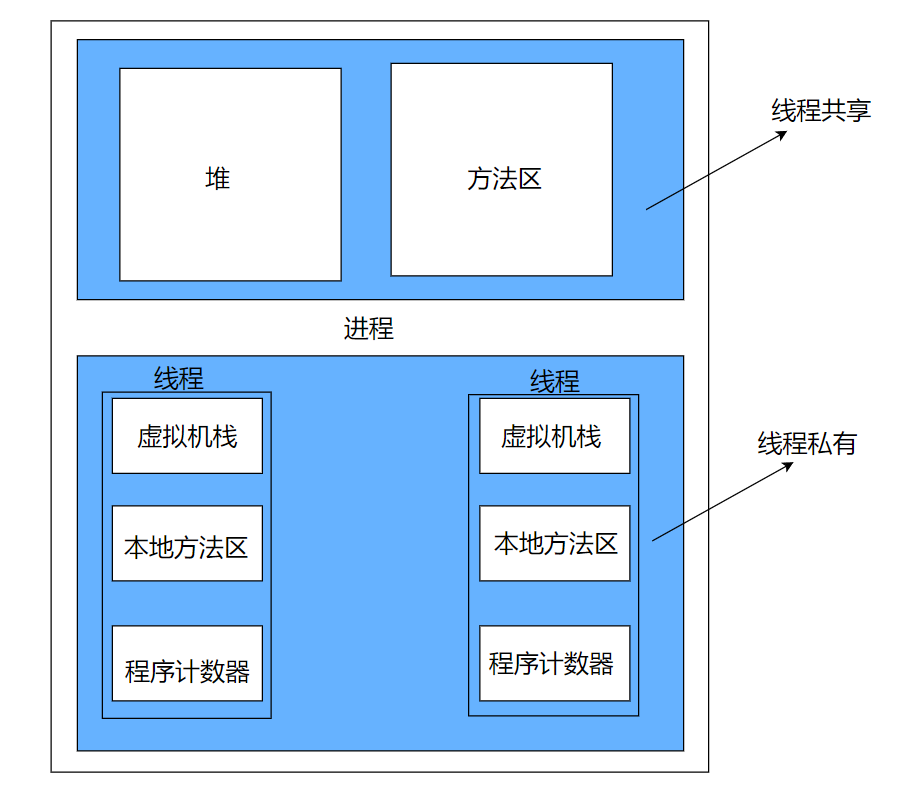
为什么虚拟机栈,本地方法区,程序计数器是私有的?
程序计数器
- 字节码解释器通过改变程序计数器来依次读取指令,从而实现代码的流程控制,如:顺序执行、选择、循环、异常处理。
- 在多线程的情况下,程序计数器用于记录当前线程执行的位置,从而当线程被切换回来的时候能够知道该线程上次运行到哪儿了。
和PCB中的上下文联系起来:
在上文中,我们提到“并发执行”,在执行过程中,会产生很多的“中间结果”,在进程切出于CPU之前,需要把这些“中间结果”(CPU的寄存器中的各种值),保存到PCB的上下文中。
这个过程是将寄存器的数据存放到内存中,也就是我们平时所见的【存档】
当下一次CPU再次调度这个进程时,就要把之前的数据读取出来,放入寄存器中,也就是所谓的【读档】。
具体操作过程:有一个PC程序计数器,他会记录上一次执行到哪一个位置,在下一次执行时,就从这个位置继续执行。
虚拟机栈:每个 Java 方法在执行的同时会创建一个栈帧用于存储局部变量表、操作数栈、常量池引用等信息。从方法调用直至执行完成的过程,就对应着一个栈帧在 Java 虚拟机栈中入栈和出栈的过程。
本地方法栈:和虚拟机栈所发挥的作用非常相似,区别是: 虚拟机栈为虚拟机执行 Java 方法 (也就是字节码)服务,而本地方法栈则为虚拟机使用到的 Native 方法服务。 在 HotSpot 虚拟机中和 Java 虚拟机栈合二为一。
✍线程的创建
1.继承 Thread 类
class MyThread extends Thread{@Overridepublic void run() {while (true){System.out.println("hello thread");try {Thread.sleep(1000);} catch (InterruptedException e) {throw new RuntimeException(e);}}}
}
public class demo1 {public static void main(String[] args) throws InterruptedException {Thread t = new MyThread();t.start();while (true){System.out.println("hello main");Thread.sleep(1000);}}
}
2.实现Runnable接口
class MyRunnable implements Runnable{@Overridepublic void run() {while (true){System.out.println("hello thread2");try {Thread.sleep(1000);} catch (InterruptedException e) {throw new RuntimeException(e);}}}
}public class demo2 {public static void main(String[] args) throws InterruptedException {Thread t = new Thread(new MyRunnable());t.start();while (true){System.out.println("hello main2");Thread.sleep(1000);}}
}
3.匿名内部类
public class demo3 {public static void main(String[] args) throws InterruptedException {Thread t = new Thread(){@Overridepublic void run() {while (true){System.out.println("hello thread3");try {Thread.sleep(1000);} catch (InterruptedException e) {throw new RuntimeException(e);}}}};t.start();while (true){System.out.println(" hello main");Thread.sleep(1000);}}
}
4.匿名内部类创建 Runnable ⼦类对象
public class demo4 {public static void main(String[] args) throws InterruptedException {Thread t = new Thread((Runnable) () ->{while (true){System.out.println("hello thread4");try {Thread.sleep(1000);} catch (InterruptedException e) {throw new RuntimeException(e);}}});t.start();while (true){System.out.println(" hello main4");Thread.sleep(1000);}}
}
5.lambda 表达式创建 Runnable ⼦类对象
public class demo5 {public static void main(String[] args) {Thread t = new Thread(()->{while (true){System.out.println("hello thred5");try {Thread.sleep(1000);} catch (InterruptedException e) {throw new RuntimeException(e);}}});t.start();while (true){System.out.println(" hello main5");try {Thread.sleep(1000);} catch (InterruptedException e) {throw new RuntimeException(e);}}}
}
运行结果为两个线程交替执行。
由于没有终止条件,这两个线程会一直执行下去。
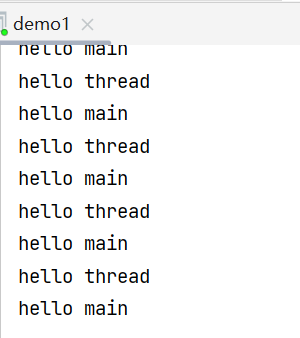



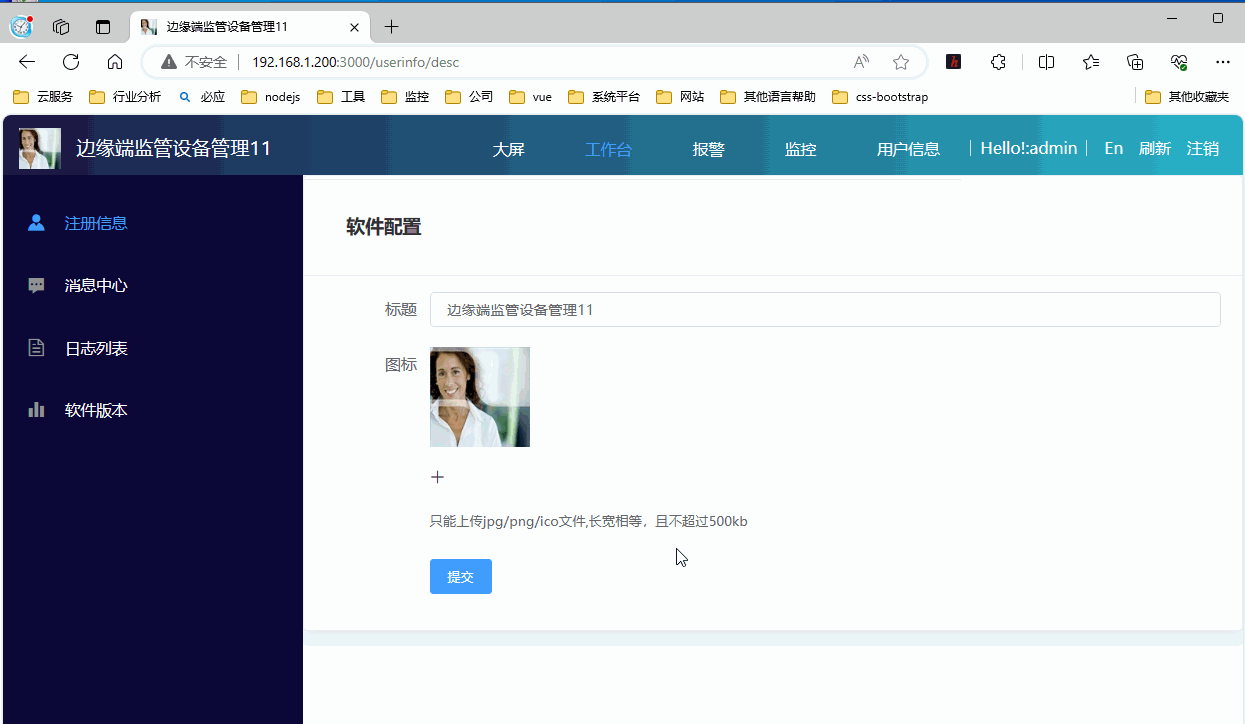

![[密码学] 密码学基础](https://img-blog.csdnimg.cn/direct/5e3bbec0c02a41f4adb7735597225b4f.png)



